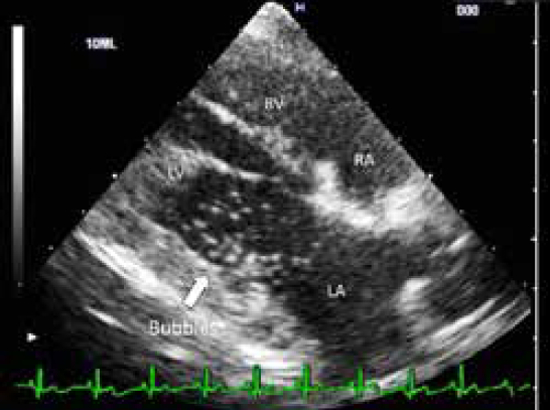Hepatopulmonary Syndrome Secondary to Portal Vein Thrombosis with Chronic Hepatitis in a Dog
Introduction
Hepatopulmonary syndrome (HPS) is a respiratory complication of hepatic disease, which was well recognized in humans and defined by the presence of 1) liver disease, 2) hypoxemia and/or high alveolar-arterial oxygen gradient (AaDO2), and 3) intrapulmonary vasodilatation. To the author’s knowledge, there is only one suspected HPS case that was previously documented in a living dog (Kaneko et al. 2016).
Objectives
This case report describes a case of HPS in a dog, and its post-mortem findings.
Methods
A nine-year-old Doberman was diagnosed with portal vein thrombosis with chronic active hepatitis and showed hypoxia (PaO2: 77 mm Hg) and increased AaDO2(38.8 mm Hg; reference range:<15 mm Hg) under room air condition. The presence of intrapulmonary vasodilatation was confirmed by agitated saline contrast transthoracic echocardiography (Figure 1). Besides, the absence of congenital cardiac defect was confirmed by transthoracic echocardiography. Based on the findings, we suspected that this dog had HPS. The dog died two years after her first visit, and we were able to performed autopsy.
Figure 1

Agitated saline contrast transthoracic echocardiography bubbles were founded in the left ventricle.
Results
Pathological examination showed dilation of pulmonary capillaries. Real time-PCR analysis showed 19.3 times higher level of lung endothelial nitric oxide synthase (eNOS) and 2.5 times higher level of heme oxygenase (HMOX), compared to three healthy dogs. eNOS and HMOX are related to the production of nitric oxide and carbon monoxide, which was reported to be involved in the mechanism of pulmonary vasodilatation in human HPS cases and rat’s model.
Conclusions
This is a description of the first confirmed canine HPS case.